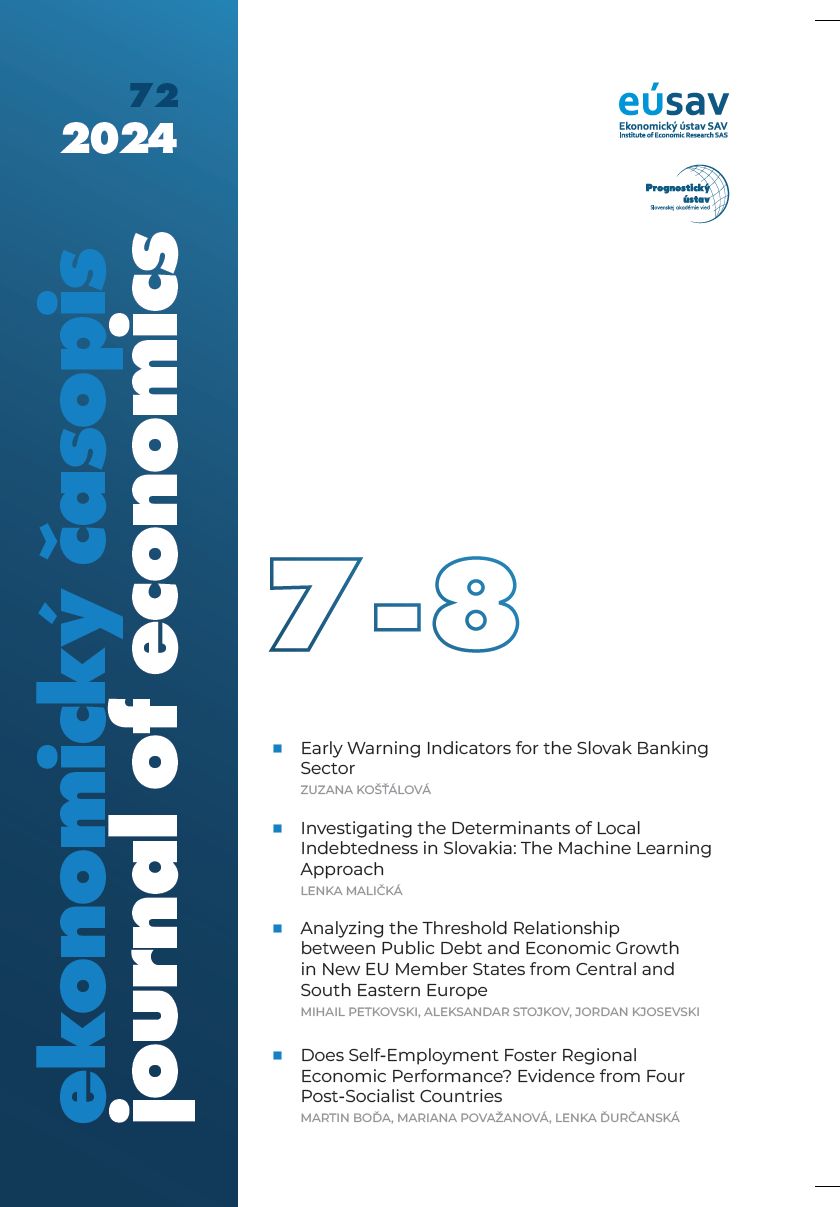Early Warning Indicators for the Slovak Banking Sector
DOI:
https://doi.org/10.31577/ekoncas.2024.07-08.01Keywords:
early warning indicators;, banking sector, financial imbalance, credit gap, Bayesian model averagingAbstract
This paper tries to identify early warning indicators for the Slovak banking sector. The aim of the early warning indicators is to predict a build-up of imbalances or rising risks in the banking sector, using the credit-to-GDP gap as a proxy. Based quarterly data from 1Q2003 to 4Q2023, we apply Bayesian model averaging (BMA) to explore potential predictive power of 35 variables over a horizon of 4 to 12 quarters. The advantage of the BMA is that it accounts for uncertainty in the selection and combination of potential indicators. The results indicate that, alongside traditional indicators such as inflation, interest rates, and index of industrial production, uncertainty indicators, such as sentiment-based surveys and policy uncertainty captured by the media could send a signal of rising problems in the banking sector. Specifically, the construction confidence indicator and the German Policy Uncertainty Index were important for Slovakia. Additionally, rising household indebtedness could also serve as an early warning indicator. These findings are relevant for macroprudential policy, particularly in setting a countercyclical capital buffer.
Downloads
Published
Issue
Section
License
Copyright (c) 2025 Zuzana Košťálová

This work is licensed under a Creative Commons Attribution-NonCommercial-NoDerivatives 4.0 International License.


